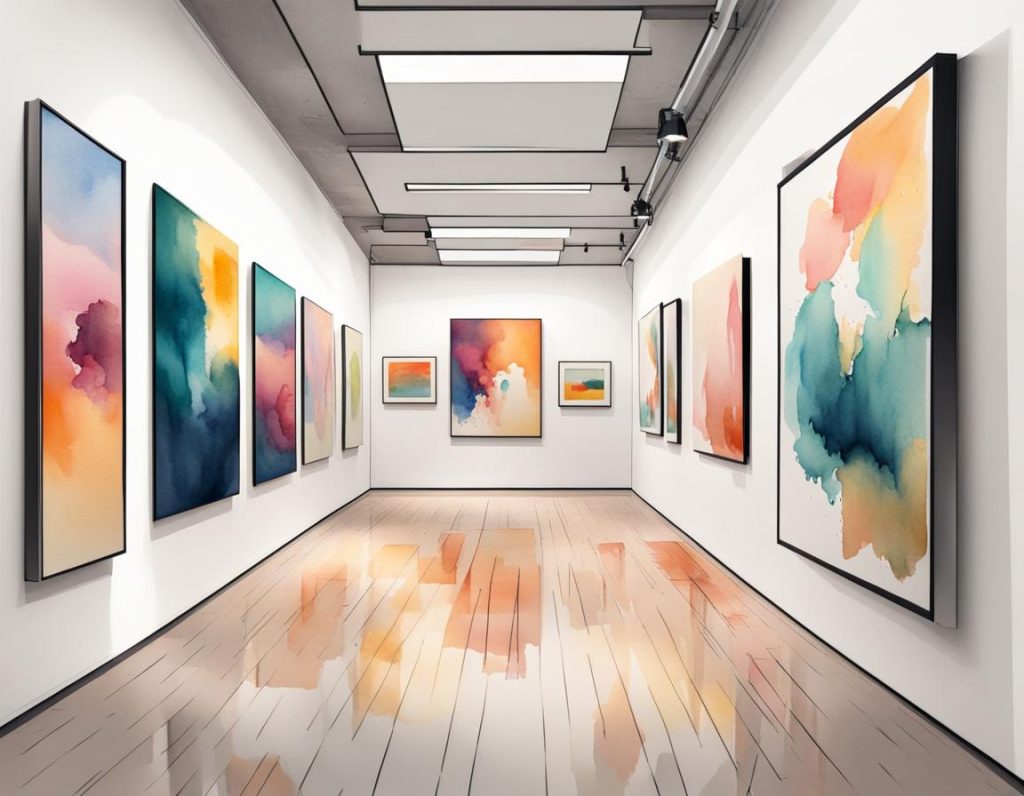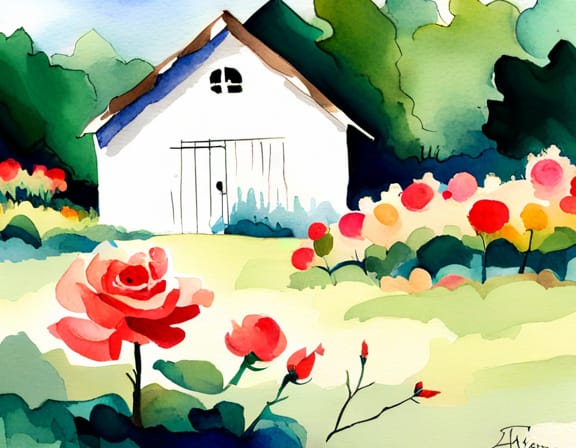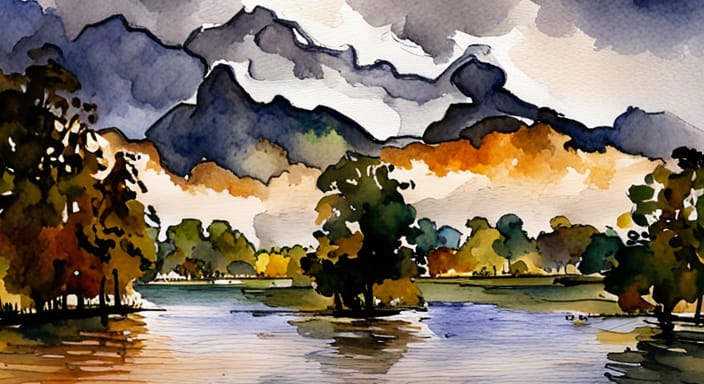
In the vast world of art, watercolor paintings have carved a unique niche for themselves. The ethereal beauty and delicate strokes of watercolors have captured the imagination of art enthusiasts for centuries. From the serene landscapes of Turner to the vibrant botanical illustrations of Redouté, watercolor artworks have always held a special place in the hearts of collectors and connoisseurs.
In this article, we will delve into the fascinating world of watercolor market trends, exploring the dynamics of collecting, sales, and exhibitions. We will examine the factors that influence the value and appreciation of watercolor artworks, and shed light on the role of art galleries, exhibitions, and collectors in shaping the market.
Market Trends in Watercolor Painting
Understanding the market trends in watercolor painting is crucial for both artists and collectors. It provides valuable insights into the demand, pricing, and popularity of this art form. Let’s take a closer look at some key aspects of the watercolor market.
1. Sales Data and Auction Records
Sales data and auction records are essential indicators of the market value of watercolor artworks. They reflect the buying patterns and preferences of collectors, as well as the overall health of the market. By analyzing these records, we can identify emerging trends, popular themes, and artists in high demand.
2. Rising Popularity of Watercolor
In recent years, watercolor painting has witnessed a resurgence in popularity. This resurgence can be attributed to several factors, including the growing interest in traditional art forms, the rise of social media platforms showcasing watercolor art, and the increasing number of artists experimenting with this medium. As a result, the demand for watercolor artworks has been on the rise, leading to an increase in their market value.
3. Diverse Range of Styles
Watercolor painting offers artists a wide range of styles and techniques to explore. From loose and expressive brushwork to detailed and realistic renderings, watercolor can adapt to various artistic visions. This versatility attracts collectors with diverse tastes, resulting in a vibrant and dynamic market for watercolor artworks.
4. International Influence
The watercolor market is not limited to any specific region or country. It is a global phenomenon, with artists and collectors from all around the world contributing to its growth. The exchange of ideas, techniques, and cultural influences adds richness and diversity to the watercolor market, making it a truly global art form.
Influence of Art Galleries, Exhibitions, and Collectors
Art galleries, exhibitions, and collectors play a significant role in shaping the watercolor market. They act as catalysts for the appreciation and promotion of watercolor artworks, creating a bridge between artists and collectors. Let’s explore their influence in more detail.
1. Art Galleries
Art galleries provide a platform for artists to showcase their watercolor artworks to a wider audience. They curate exhibitions, organize events, and promote the work of both established and emerging watercolor artists. Galleries also serve as a meeting point for collectors, providing them with an opportunity to discover and acquire new artworks.
2. Exhibitions and Art Fairs
Exhibitions and art fairs dedicated to watercolor painting are instrumental in creating awareness and generating interest in this art form. They bring together a curated selection of artworks, attracting collectors, art enthusiasts, and professionals from the industry. These events provide artists with visibility and exposure, while offering collectors the chance to explore a diverse range of watercolor artworks.
3. Collectors and Their Role
Collectors play a crucial role in the watercolor market. Their passion for art, meticulous research, and discerning taste contribute to the value and appreciation of watercolor artworks. By actively collecting and supporting watercolor artists, collectors drive demand and elevate the status of this medium in the art world.
Factors Contributing to the Value and Appreciation of Watercolor Artworks
The value and appreciation of watercolor artworks are influenced by various factors. Let’s delve into some of the key elements that contribute to their allure and desirability.
1. Technical Mastery
Watercolor painting requires a high level of skill and technical mastery. The delicate balance between water and pigment, the ability to control transparency and create subtle washes, all contribute to the allure of this medium. Collectors appreciate the craftsmanship and expertise demonstrated by artists who can master the intricacies of watercolor painting.
2. Uniqueness and Originality
Originality and uniqueness are highly valued in the art world. Watercolor artworks that offer a fresh perspective, innovative techniques, or a distinct artistic voice stand out and capture the attention of collectors. The ability to create something different within the medium of watercolor adds to the desirability and market value of the artwork.
3. Historical Significance
Watercolor painting has a rich history that spans centuries. Throughout history, watercolor has been used by renowned artists to document landscapes, botanical specimens, and historical events. Collectors often seek out watercolor artworks that have historical significance, as they represent a connection to the past and hold cultural value.
4. Rarity and Scarcity
The rarity and scarcity of watercolor artworks also contribute to their value and appreciation. Limited editions, one-of-a-kind pieces, and artworks from renowned artists who have a limited body of watercolor work available in the market tend to be highly sought after by collectors. The scarcity factor adds exclusivity and can drive up the prices of watercolor paintings.
5. Artistic Reputation and Recognition
The reputation and recognition of an artist play a significant role in the value and appreciation of their watercolor artworks. Collectors often look for artists who have gained critical acclaim, received prestigious awards, or have a strong presence in the art world. The artist’s track record and standing contribute to the perceived value of their watercolor paintings.
Further Reading: Are Watercolor Paintings Valuable?
In conclusion, the watercolor market is witnessing a resurgence in popularity, driven by a diverse range of styles, international influences, and the passion of collectors. Art galleries, exhibitions, and collectors play crucial roles in shaping the watercolor market, creating avenues for artists to showcase their work and collectors to acquire unique pieces. The value and appreciation of watercolor artworks are influenced by factors such as technical mastery, uniqueness, historical significance, rarity, and artistic reputation. Whether you are an artist looking to explore the watercolor medium or a collector seeking to enrich your collection, understanding the market trends and dynamics is essential for navigating the world of watercolor painting.
Remember, the beauty of watercolor lies not only in its delicate brushstrokes and vibrant hues but also in the stories it tells and the emotions it evokes. So, dive into this captivating world and let the enchanting world of watercolor painting mesmerize you.
Frequently Asked Questions (FAQ)
Here are some frequently asked questions about the watercolor market, collecting, sales, and exhibitions:
1. How can I determine the value of a watercolor painting?
The value of a watercolor painting can be determined based on various factors, including the artist’s reputation, the artwork’s condition, its historical significance, and market demand. Consulting art appraisers or galleries specializing in watercolor can provide a more accurate assessment of the painting’s value.
2. Are watercolor paintings a good investment?
Watercolor paintings can be a good investment if you research and select artworks wisely. Look for artists with a track record of increasing value and consider the overall market trends. However, it’s important to note that investing in art comes with risks, and it’s advisable to consult with experts before making significant investments.
3. How can I start collecting watercolor artworks?
To start collecting watercolor artworks, begin by researching artists and exploring different styles and themes that resonate with you. Visit galleries, exhibitions, and art fairs to discover new artists and connect with the art community. Engaging with knowledgeable art dealers or consultants can also provide guidance in building your collection.
4. Are there any notable watercolor exhibitions or festivals to attend?
Yes, there are several notable watercolor exhibitions and festivals around the world. Some popular ones include the International Watercolor Society’s exhibitions, the American Watercolor Society’s Annual International Exhibition, and the World Watercolor Exhibition. Attending these events can offer a chance to view exceptional watercolor artworks and connect with artists and fellow collectors.
5. Can watercolor paintings be displayed long-term without fading?
Watercolor paintings, like any artwork, require proper care and handling to ensure their longevity. Displaying watercolor paintings away from direct sunlight, controlling humidity levels, and using archival materials for framing can help prevent fading and preserve the colors of the artwork over time.
Disclaimer: The information provided in this article is for educational and informational purposes only. We do not endorse or promote any specific artists, galleries, or exhibitions mentioned in this article. Collecting art involves personal preferences and should be done based on careful research and consultation with experts.


